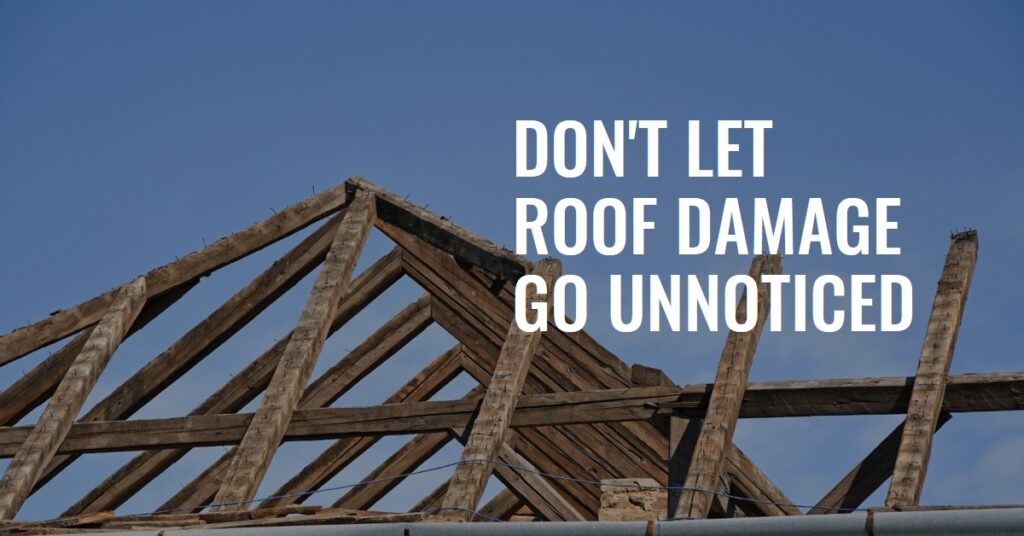The roof is the protective shield of our homes, guarding us against external elements and ensuring our safety and comfort.

But like all other parts of the house, roofs have a lifespan and can succumb to wear and tear.
Early detection of potential roof issues can save homeowners significant time, money, and stress. This article will dive into the tell-tale signs that might indicate roof damage.
The 7 Key Indicators of Roof Damage
As you familiarize yourself with the nuances of your home, there are specific signs and symptoms to keep an eye out for:
1. Missing or Damaged Shingles
Shingles form the primary protective layer on many roofs. Over time, due to external factors like strong winds or falling tree branches, shingles might become damaged or even go missing.
A roof with cracked, broken, or missing shingles is vulnerable to leaks and water damage. Ensure you regularly inspect the roof, especially after severe weather events, to ensure shingles are intact and in good condition.
2. Sagging Roof Areas
A sagging roof is a serious concern, often indicating structural issues. This sagging could result from prolonged water pooling, deteriorated decking, or foundational damage.
If you notice a depression or a dip in any part of the roof, it’s essential to consult a roofing professional immediately.
3. Granules in Gutters
Asphalt shingles shed granules, but excessive granule loss can indicate that the shingles are nearing the end of their functional life. If you observe your gutters filled with granules, consider re-shingling or a roof replacement.
4. Visible Moss and Algae Growth
While moss and algae on the roof might sometimes be more of a cosmetic issue, they can also hint at potential problems.
Moss, especially, can trap moisture against the roof surface. Over time, this trapped moisture can damage the roof, leading to rot and degradation. Removing visible moss or algae is a good practice to ensure the roof remains in peak condition.
5. Damaged Flashing
Flashing is the material, often metal, placed around roof penetrations like chimneys, skylights, or vents to divert water from seeping into the home.
Damaged or aged flashing is a common cause of leaks in the roof. Regularly inspect these areas to ensure the flashing remains secure and intact.
6. Ceiling Spots and Leaks Inside the Home
Water intrusion inside the house is one of the most evident signs of potential roof damage. If you notice damp spots on the ceiling, walls, or even unexplained puddles on the floor, it clearly indicates a leak.
While it might not always be the roof, it’s a good starting point for your investigation.
7. A Spike in Energy Bills
Surprisingly, your monthly energy bills can also hint at roof issues. If there are sudden, unexplained spikes in heating or cooling costs, it could mean that there’s inadequate insulation due to roof damage, allowing external temperatures to influence indoor conditions more than usual.
Addressing the Identified Issues
Identifying potential roof damage is just the first step. Addressing these issues promptly is paramount. For minor problems, homeowners might opt for DIY fixes.
However, it’s wise to consult professionals for more complex or large-scale issues is wise.
They can provide a comprehensive assessment and recommend the best course of action. Remember, a stitch in time saves nine. Addressing minor roof damages today can prevent more extensive, more expensive issues.
Final Thoughts on Roof Damage
The roof is more than just a structure over our heads; it’s a crucial component ensuring the safety and longevity of our homes. Regular inspections and a keen eye for the signs of potential damage are essential for every homeowner.
Proactively, one can ensure that the roof remains in optimal condition, safeguarding the home and its inhabitants for years.
